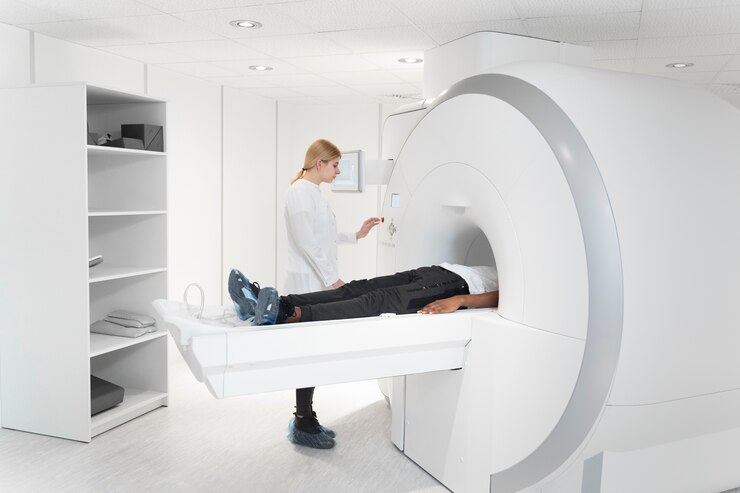Neck pain is a prevalent ailment that impacts millions worldwide, hindering daily activities and causing discomfort. It often stems from various factors and requires a comprehensive understanding of effective management.
This article delves deep into the causes, symptoms, diagnosis, and diverse treatment options for pain, aiming to offer valuable insights and guidance.
Unraveling the Root Causes of Neck Pain
It refers to the process of examining and understanding the various factors or underlying reasons that contribute to the onset or development of neck pain.
This exploration aims to identify the primary triggers or sources behind neck discomfort or pain experienced by individuals.
1. Postural Strain and Muscular Stress
The modern lifestyle with health often involves prolonged periods of sitting, especially in front of computers or using smartphones.
These habits encourage poor posture, such as slouching or craning the neck forward, which strains the muscles and ligaments supporting the neck. Over time, this strain leads to discomfort and pain, particularly in the cervical spine.
2. Stress-Induced Tension and Emotional Factors

Stress and anxiety contribute to increased muscle tension throughout the body, including the neck and shoulders.
The intricate link between emotional stress and physical manifestations is evident in neck pain. Elevated stress levels cause muscles to tighten, leading to stiffness and discomfort in the neck area.
3. Occupational Factors and Lifestyle Choices
Occupational hazards and repetitive movements in certain professions, especially those involving heavy lifting or prolonged periods of physical labor, increase the risk of neck pain.
Moreover, lifestyle choices like lack of regular activity, poor posture while sitting or standing, and inadequate nutrition can exacerbate pain symptoms.
4. Muscular Imbalances and Overuse
Imbalances in muscle strength or overuse of specific neck muscles can lead to strain and discomfort.
Imbalanced strength between the anterior (front) and posterior (back) neck muscles, often observed in individuals with desk jobs, can create tension and pain due to uneven stress on the neck muscles
5. Trauma, Injuries, and Structural Issues
Neck pain often arises from traumatic incidents such as accidents, falls, or sports injuries. Whiplash, a common neck injury, occurs due to sudden jerking movements of the head, leading to strain on the soft tissues of the neck.
It is degenerative conditions like osteoarthritis, herniated discs, or cervical spondylosis that can cause structural changes in the spine. These changes, such as bone spurs or disc degeneration, contribute significantly to chronic pain.
Assessing and Understanding Neck Pain Symptoms
It involves the comprehensive examination and interpretation of the various signs or indications related to discomfort, stiffness, or pain experienced in the neck region.
This assessment aims to evaluate and comprehend the array of symptoms that individuals may encounter when dealing with neck pain.
This process typically involves recognizing and interpreting a wide spectrum of symptoms associated with pain, including:
Stiffness and Reduced Range of Motion: Difficulty in moving or turning the neck freely due to stiffness or restricted mobility.
- Localized Pain: Aching, soreness, or sharp pain felt specifically in the neck area.
- Radiating Pain: Discomfort that extends from the neck to the shoulders, arms, or upper back.
- Headaches: Headaches originating from the neck, often caused by muscle tension or nerve compression.
- Accompanying Neurological Symptoms: Such as numbness, tingling sensations, or weakness in the arms or hands, indicating potential nerve involvement.

Diagnostic Tools and Examination Techniques
It refers to the varied methods and procedures used by healthcare professionals to assess, identify, and diagnose neck-related issues or conditions causing discomfort or pain.
These tools and techniques are integral in determining the root cause of pain and formulating an accurate neck pain treatment plan.
Several diagnostic approaches and tools commonly employed in assessing pain include:
1. Physical Examination: Healthcare providers conduct a comprehensive physical assessment, evaluating posture, range of motion, tenderness, and neurological functions in the neck and associated areas.
2. Electromyography (EMG) and Nerve Conduction Studies: These tests assess nerve function and identify potential nerve damage or abnormalities contributing to pain or related symptoms.
3. Laboratory Tests: Blood tests might be conducted to rule out certain inflammatory conditions or infections that could be contributing to neck pain.
4. Imaging Studies: Diagnostic imaging techniques like X-rays, Magnetic Resonance Imaging, Computed Tomography (CT) scans, or Ultrasound scans offer detailed images of the cervical spine. These imaging tools help identify structural abnormalities, such as fractures, degenerative changes, herniated discs, or spinal cord compression.
Tailored Treatment Modalities for Neck Pain Relief
It refers to the customized and individualized approaches adopted to alleviate discomfort and manage neck pain based on the specific needs and conditions of each patient.
These treatment modalities are personalized to address the underlying causes and severity of neck pain, aiming to provide effective relief and improve the overall well-being of the individual.
These tailored treatment modalities encompass various approaches, including:
1. Conservative Management: Strategies such as physical therapy, exercise regimens, and pain management techniques are employed to strengthen muscles, improve flexibility, correct posture, and manage pain without resorting to invasive procedures or surgeries.
2. Advanced Therapies and Interventions: In cases where conservative methods are insufficient, advanced treatments like injections of medications (e.g., corticosteroids), nerve blocks, or minimally invasive procedures (e.g., radiofrequency ablation) may be utilized to target specific areas causing pain and provide sustained relief.
3. Surgical Interventions: Surgical procedures, such as discectomy, cervical fusion, or artificial disc replacement, are considered in severe cases or when conservative treatments fail to alleviate neck pain. These interventions aim to address structural issues or abnormalities causing persistent discomfort.

Holistic Approaches and Lifestyle Modifications
It encompasses a comprehensive set of strategies and adjustments aimed at managing pain by addressing various aspects of an individual’s lifestyle, habits, and overall well-being.
These approaches focus on a holistic view of health, considering not just the physical symptoms, but also the broader context of an individual’s lifestyle and habits that may contribute to or alleviate pain.
- Ergonomic Adjustments: Incorporating proper ergonomic practices at workstations and using ergonomic accessories reduce strain on the neck, preventing discomfort.
- Stress-Relief Techniques: Engaging in stress reduction activities such as meditation, yoga, or mindfulness aids in relaxing neck muscles and alleviating tension-induced pain.
- Exercise and Posture Improvement: Regular activity, including neck-specific exercises and stretches, helps maintain neck health, reducing the risk of pain.
Conclusion
Understanding the multifaceted causes and effective treatments for neck pain is crucial for managing this prevalent health issue.
From recognizing symptoms to seeking appropriate medical attention and adopting preventive measures, addressing pain necessitates a comprehensive approach tailored to individual needs.
By integrating a blend of conservative therapies, advanced interventions, and lifestyle adjustments, individuals can seek relief and improve their overall neck health, enhancing their quality of life.




